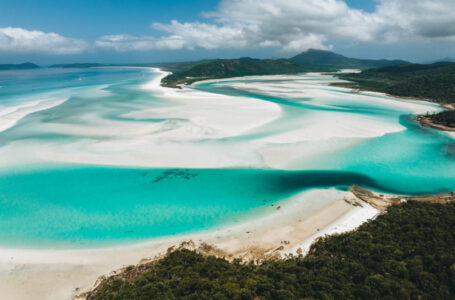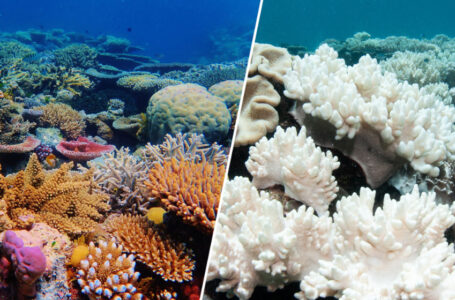A few unbelievable places on Earth
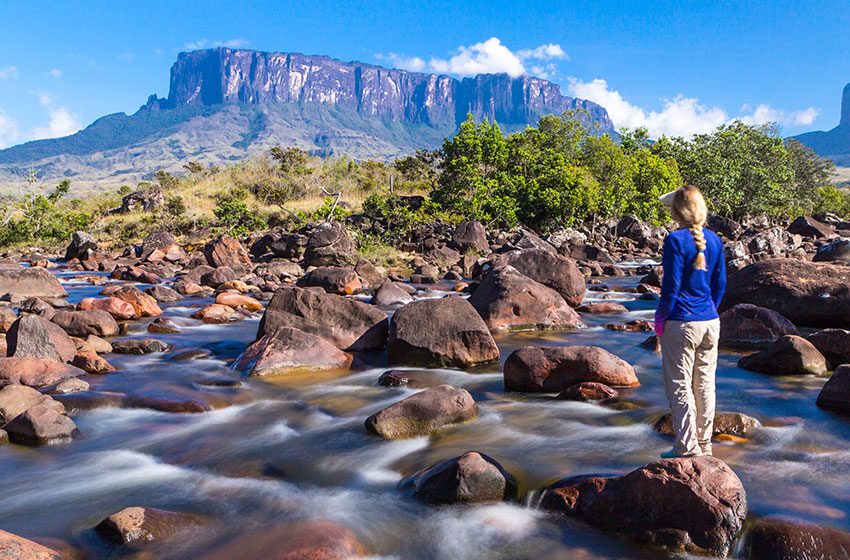
Earth is full of wonderful and unusual places, and adventurers and photographers roam worldwide, capturing the beauty of such regions. Furthermore, geographical locations, climatic conditions, and seasons offer a variety of awe-stocking sceneries. For instance, pink lakes, stunning lavender or tulip fields, breathtaking canyons and mountains, etc.
Some of the following places are gifts of nature, while a few of them have undergone human interferences, resulting in beautiful sights to behold. For example, the Japanese learned how to tame thousands of Wisterias and form a romantic tunnel; another one was created in Ukraine by a passing train.
So, let us have a look at some of the unbelievable places on Earth that you must check out:
Richat Structure or the Eye of the Sahara
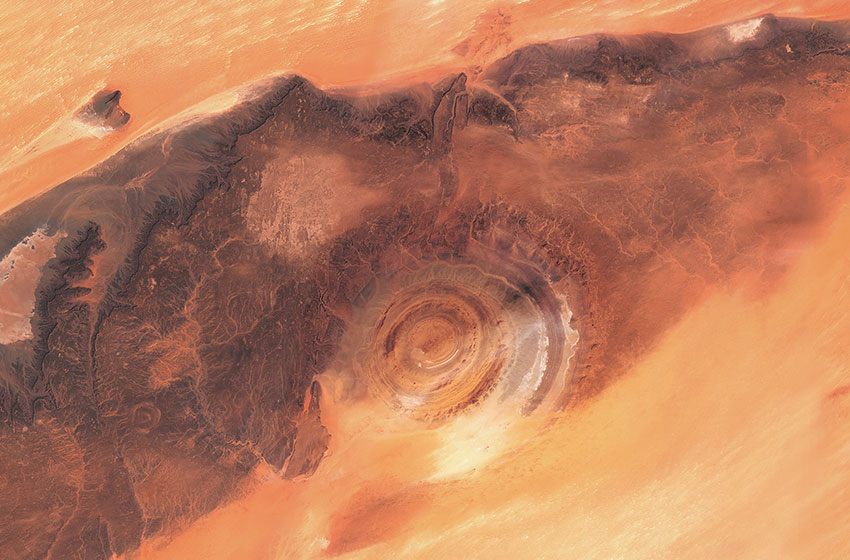
The Blue Eye of the Sahara, or known as the Richat Structure, is a geological formation in the Sahara Desert. The formation stretches across a 40 km-wide region in Mauritania. It was first photographed by Gemini astronauts, who used it as a landmark in the 1960s, to monitor the progress of the opening sequences. Later, the Landsat satellite took additional images and provided information about the formation’s size, height, and extent.
The geologists initially believed that the Eye of the Sahara was a blow crater that was created when an object from space struck the surface. However, the long studies of rocks within the structure show that their origins are entirely World-based. The Richat Structure is a light elliptical dome, deeply eroded in 40 km diameter (25 ml).
The sedimentary rock at this dome extends from the Late Proterozoic in the centre of the dome to the Ordovis sandstone in the middle. The sedimentary rocks forming this structure run out at 10–20 °. Differential wear of resistant quartzite layers has created a high-puffy circular cuesta. The centre consists of a siliceous breeder covering an area of at least 30 kilometres (19 mi) in diameter.
Exposed within the interior of the Richat Structure are a variety of intrusive and extrusive igneous rocks. They include rhyolitic volcanic rocks, gabbros, carbonatites and kimberlites. The rhyolitic rocks consist of lava flows and hydrothermally altered tuffaceous rocks that are part of two distinct eruptive centres, which are interpreted to be the eroded remains of two maars.
The Grand Tsingy
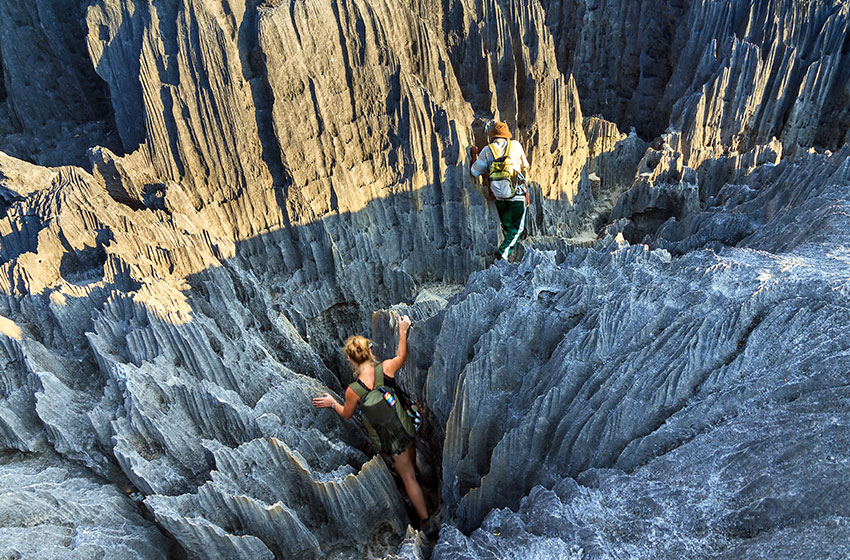
The fourth largest island on Earth, Madagascar, is home to plenty of double-take-worthy sights. The country developed independently, which sets the culture apart from the rest of Eastern Africa. Because the country was under French rule until 1960, there is evidence of French architecture throughout the cities.
Moreover, one of the distinctive places is the grand Tsingy, which in Malagasy, means “where one cannot walk barefoot.” And that’s no joke. The word refers to tall, thin, needle-like rock formations that can be found throughout the country.
The Tsingy de Bemaraha Strict Nature Reserve, a UNESCO World Heritage site, is the largest example of a Tsingy forest on Earth. How big? The reserve, which includes the veritable limestone cathedral, stretches 375,600 acres. But the height is the really scary part; some of the rock pinnacles can reach 2,600 feet. It is not only a stunning and/or terrifying sight to behold, but this Tsingy in central west Madagascar is also a hub for endemism, as it’s home to many unique endangered flora and fauna, including lemurs.
Door to Hell
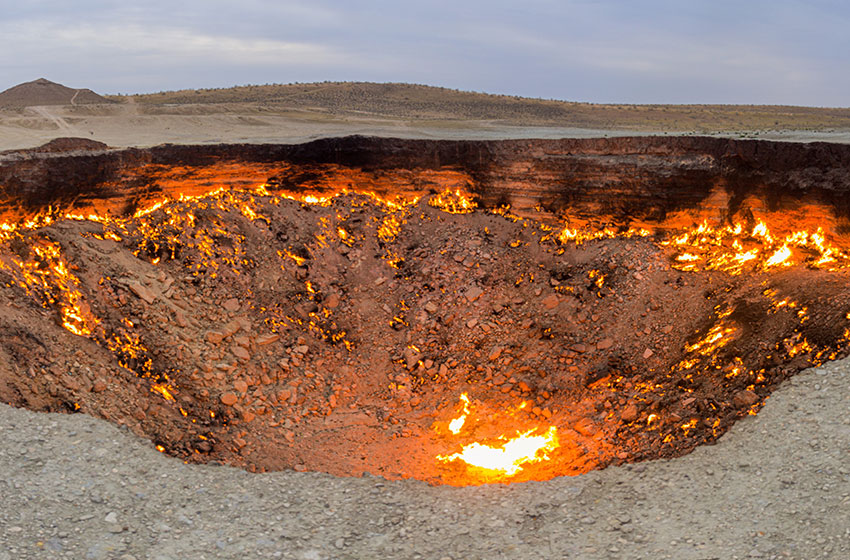
The Darvaza Gas Crater is large in the Karakum Desert of north-central Turkmenistan, where thousands of flames fueled by seeping natural gas have been burning for decades. The flaming crater’s sights and sounds are frightening enough that local people call it the “Door to Hell” or the “Gates of Hell”.
Each dancing flame marks the spot where natural gas (methane) emerges from the walls, floor, or talus piles within the crater. When natural gas emerges, oxygen in the atmosphere causes it to burst into flames.
People approaching the crater hear the sound of the flames and feel the heat that is too intense to stand at some points along the crater’s edge. The heat and an odour of combustion can be sensed for some distance downwind. The crater is located near the village of Darvaza, also known as Derweze, in north-central Turkmenistan – about 160 miles (260 kilometres) north of the Turkmen capital of Ashgabat.
The crater is about 226 feet (69 meters) across and about 98 feet (30 meters) deep. It has an area that would nearly cover ¾ of an American football field – including the end zones. The Darvaza Gas Crater is reported to have formed in about 1971 while Soviet geologists were exploring oil and natural gas.
They began drilling and quickly realised that they had penetrated an underground cavern. Then the ground beneath their equipment began to subside.
The crew managed to escape, but their equipment was lost in the collapse. (Remains of what is thought to be the drilling rig are present on one side of the crater.)
Naica Mine, The Cave of Crystals
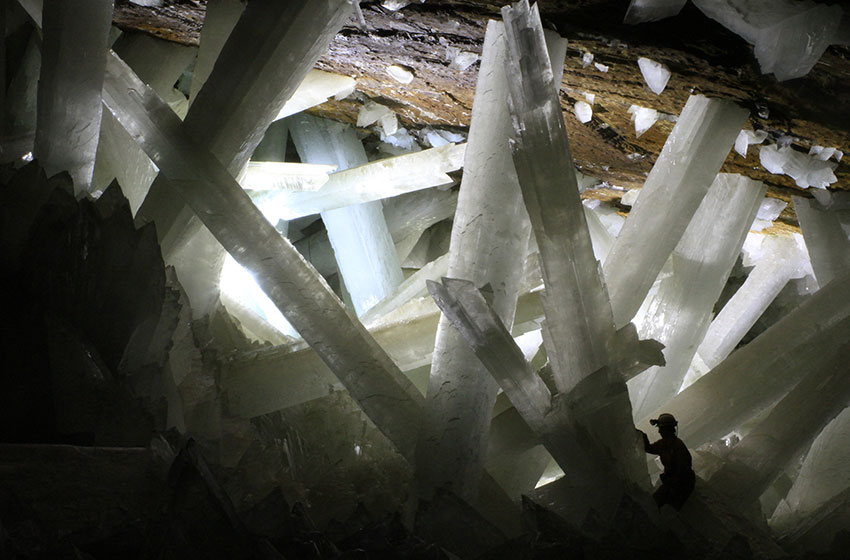
The Cave of Crystal Giants is one of our planet’s most enormous underground spectacles. It is a geological wonder located in the depths of the Mexican desert of Chihuahua, just close to the United States of America border.
This lead, zinc and silver mine is wholly covered in pure chalk crystals, which reach a depth of 300 meters. It was only discovered in 2002 after the collapse of a cave wall and was then given the name Cave of Crystal Giants (Cueva de los Cristales).
The cave contains the most extensive crystalline formations ever found on Earth, some weighing about 55 tons. These crystal formations can measure up to 15 meters in length and 2 meters in diameter and survive in an extreme environment with temperatures that range from 118°F to 140°F with a humidity of 100%. This inferno of heat is uninhabitable by man, and those who work in the caves are made to wear special heat-resistant suits equipped with respirators, very similar to space suits.
A recent study revealed the discovery of certain microbes, mainly bacteria which have been trapped inside the crystal formations for at least 50,000 years. These bacteria thrive on iron, sulfur and other chemicals that can live within extreme environmental conditions.
This amazing discovery helps us reflect on the ability of life to adapt to even the most hostile of environments. The Naica Cave is certainly not a tourist destination, but its mysterious beauty allows us to understand the endless hidden possibilities of our planet.
Wisteria Flower Tunnel in Japan

The wisteria tunnels are located in the Kawachi Fuji Gardens in Kitakyushu, Japan, six hours outside of Tokyo. The private gardens are known for their wisteria, featuring 150 plants and 20 different species. A viewpoint at the top of the hillside oasis offers top-notch views of the flowers and the bamboo groves in the surrounding valleys.
The entire garden feels straight out of a fairytale, but the main attractions are the two 100-meter wisteria tunnels. The living structures perfectly combine nature and architecture, sometimes known as “arbortecture.” Wisteria vines can climb up to 65 feet above the ground and 33 feet laterally by twining their stems around any available support, which is how the tunnels were formed. The flowers range from dark purple to light purple to white, offering a stunning backdrop for a photoshoot.
The best time to visit the Kawachi Fuji Gardens is in late April or early May, during the “Fuji Matsuri” or “Wisteria Festival,” when the magical tunnel is in full bloom. At any other time of year, you’ll find bare branches instead of lush, purple flowers. It’s around the same time as the nation’s famed Cherry Blossom Festival.
Mount Roraima
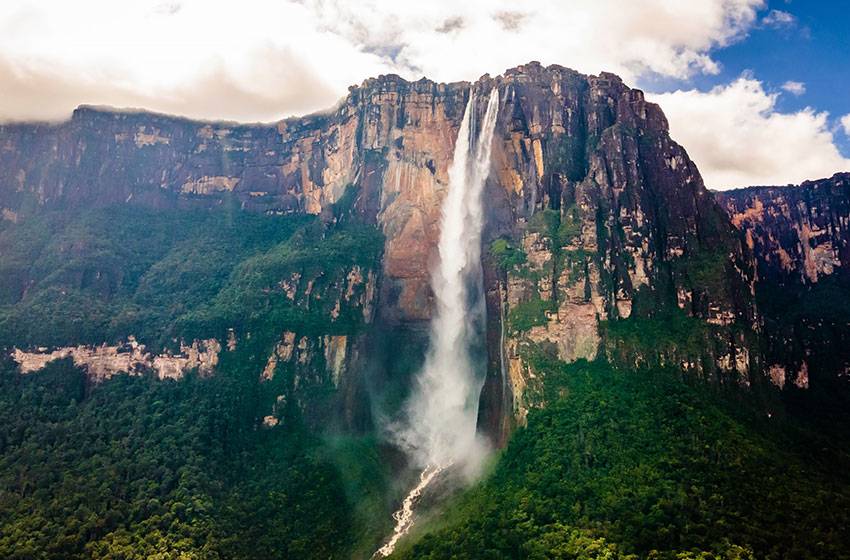
Mount Roraima is the highest of the Pakaraima chain of the Tepui plateaus. Mount Roraima is 14 kilometres long (9 miles) and 2810 meters high (9222 feet) at its highest point (Maverick Rock), with 400 meters (1300 feet) of cliffs on each side of the plateau. Roraima is largely sandstone without much vegetation, with a few sparse bushes all around. Roraima’s unique and isolated nature makes it home to many unique species of flora and fauna. It is truly a prehistorical island.
Roraima is also a sacred ground for the Pemons people, the original inhabitants of Canaima National Park. The park protects part of the Guayanan Highlands moist forests ecoregion. About 65% of the park is occupied by plateaus of rock called tepuis, which are a kind of tabletop mountain millions of years old, with vertical walls and almost flat tops.
These constitute a unique biological environment and are also of great geological interest. Their sheer cliffs and waterfalls (including Angel Falls, the world’s highest waterfall, at 979 metres (3,212 ft)) create spectacular landscapes. The most famous tepuis in the park are Mount Roraima, the tallest and easiest to climb, and Auyán Tepuy, the site of Angel Falls. The tepuis are sandstone and date back to a time when South America and Africa were part of a supercontinent once known as Gondwana.




